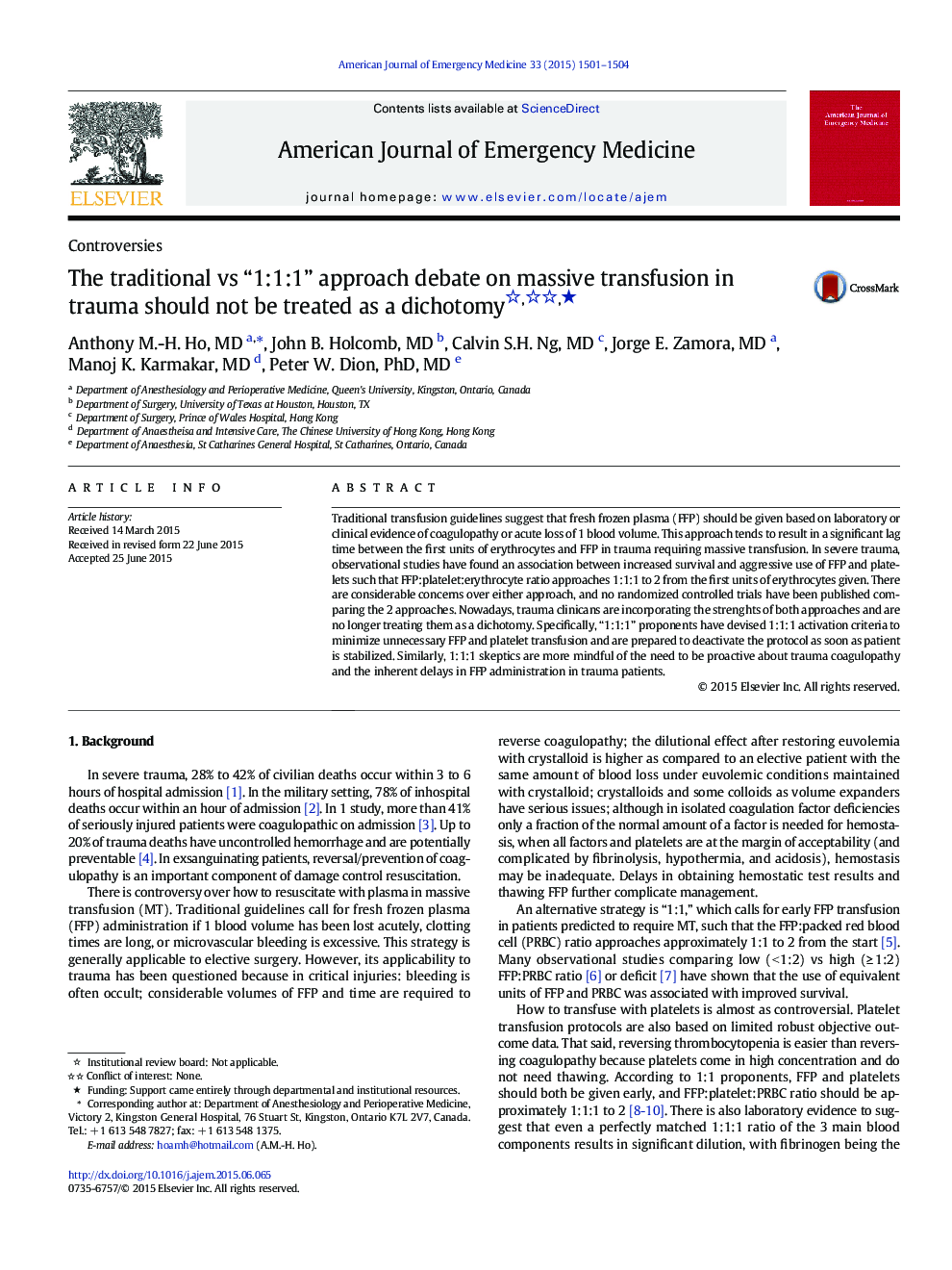| کد مقاله | کد نشریه | سال انتشار | مقاله انگلیسی | نسخه تمام متن |
|---|---|---|---|---|
| 6079177 | 1588101 | 2015 | 4 صفحه PDF | دانلود رایگان |

Traditional transfusion guidelines suggest that fresh frozen plasma (FFP) should be given based on laboratory or clinical evidence of coagulopathy or acute loss of 1 blood volume. This approach tends to result in a significant lag time between the first units of erythrocytes and FFP in trauma requiring massive transfusion. In severe trauma, observational studies have found an association between increased survival and aggressive use of FFP and platelets such that FFP:platelet:erythrocyte ratio approaches 1:1:1 to 2 from the first units of erythrocytes given. There are considerable concerns over either approach, and no randomized controlled trials have been published comparing the 2 approaches. Nowadays, trauma clinicans are incorporating the strenghts of both approaches and are no longer treating them as a dichotomy. Specifically, “1:1:1” proponents have devised 1:1:1 activation criteria to minimize unnecessary FFP and platelet transfusion and are prepared to deactivate the protocol as soon as patient is stabilized. Similarly, 1:1:1 skeptics are more mindful of the need to be proactive about trauma coagulopathy and the inherent delays in FFP administration in trauma patients.
Journal: The American Journal of Emergency Medicine - Volume 33, Issue 10, October 2015, Pages 1501-1504